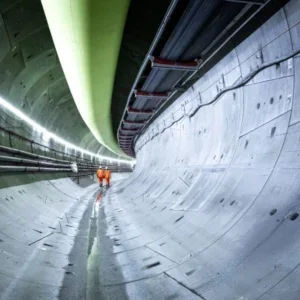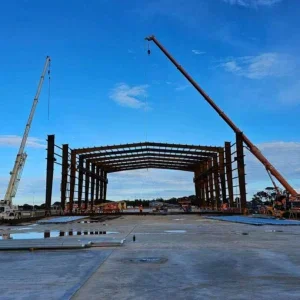On schedule and within budget the $500m Øresund Tunnel was handed over to the client , the Øresundskonsortiet, at the end of April. In addition to the 3.7 km long Øresund Tunnel, the man-made peninsula adjacent to Copenhagen Airport and the artificial island that links the tunnel to the Øresund Bridge were also handed over.
"We are celebrating the hand over of what is a very impressive creation," pointed out Steen Lykke, Contract Director for the tunnel, dredging and reclamation for Øresundskonsortiet. "The work, which started five years ago, has finished on time. There were no disputes with the contractor and no claims on this the longest concrete tunnel in the world and also the largest immersed tunnel."
In his turn Alf Algotsson, Chairman of Øresund Tunnel Contractors l/s, the contracting consortium responsible for the construction of the tunnel, praised the client saying that the success of the project was due in no small measure to the client allowing the contractor the necessary freedom of action for this design and construct contract. He also pointed out that the quality achieved had been significantly higher than for previous immersed tunnels and that it would be difficult in the future to accept anything less than this standard.
Two significant new techniques adopted for this project were the industrialised form of construction and the use of a gravel bed for the elements to rest on instead of a sand bed pumped into place afterwards. "One big advantage of a gravel bed is that you can check it before the elements are laid," points out Alf Algottsson, "whereas with pumped sand you can never be one hundred per cent certain that all the pockets have been filled."
The gravel bed concept is already being used on another immersed tunnel project, the second Benelux Tunnel crossing Rotterdam’s New Waterway.
The Øresund Tunnel Contractors consisted of NCC AB, Sweden; E Pihl & Søn AS, Denmark; Dumez GTM SA, France; John Laing Construction Ltd, UK; and Boskalis Westminster Dredging bv, the Netherlands. This consortium was responsible for designing and constructing the tunnel in a contract worth $500million, that was signed in July 1995.
The accident level was considerably lower than the average for construction sites in Denmark. There were no fatalities and in fact no one was seriously injured.
A conference on the Øresund Tunnel, which was held at the beginning of April, attracted delegates from thirty different countries. The conference was organised by Øresundskonsortiet, the International Tunnelling Association and Øresund Tunnel Contractors in association with the Danish Association of Tunnel and Underground Works.
In conjunction with the hand over of the Øresund Tunnel Per Nilsson, the newly appointed president of NCC Civil Engineering, announced that a JV including NCC had been formed to bid for the Fehmarn Belt project. The JV would look into both tunnel and bridge options. The members of the joint venture are: Bilfinger + Berger AG, Germany; Dumez GTM, France; NCC AB, Sweden; Pihl & Søn AS, Denmark; Per Aarsleff AS, Denmark; and Boskalis bv, the Netherlands.







